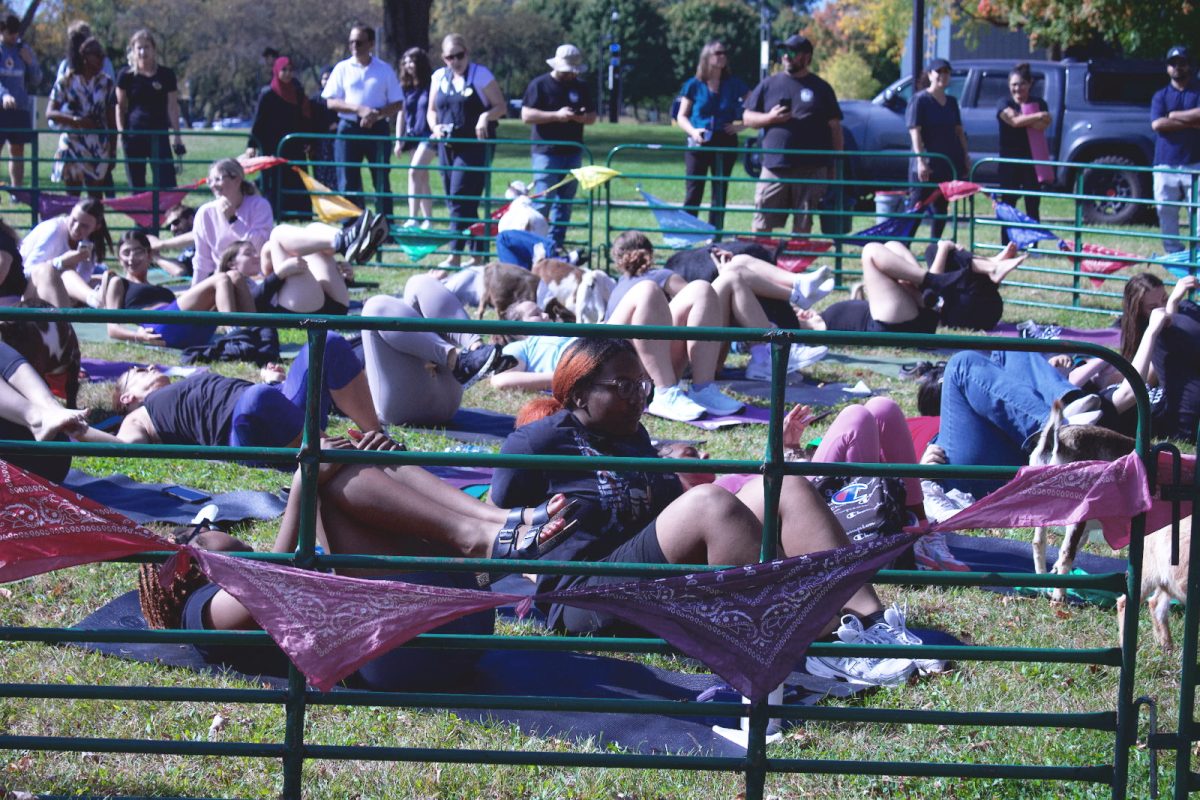As Oakland University Student Congress (OUSC) begins talks of institutionalizing the menstrual product dispenser initiative, the university’s administration proposes taking over the entire costs and upkeep if they reduce the number of dispensers to one per building. A resolution and counter proposal are on the works to reach an agreement by next semester.
Of the current 91 dispensers with free tampons and pads for students across campus,17 would remain per the proposal posed by the administration on Oct 1. While no decision will be made until the student body meets with the university administration, the initial reaction at OUSC was of total opposition.
“It’s a big concerning thing for both the campus and Student Congress as a whole, because it can basically gut the entire program,” Clover DeVore, OUSC speaker of the legislature, said. “We need at least two per building. So we need at least one in a woman’s bathroom and one in a gender neutral bathroom to provide for both groups of students on campus. I would like to see that expanded more.”
As one of OUSC’s most popular initiatives, the menstrual products dispenser initiative was conceived in 2017 and consolidated by 2023 after many challenges. After overcoming difficulties with housing and legalities years prior, now the main concerns for OUSC are accessibility, inclusion and staffing. The university shares the concern for staffing and ads budgeting considerations.
“When we relied solely on our legislative staff to do it, we have to factor that these people have classes, they have jobs, they have lives, they have other things to do, and don’t have time to dedicate their entire self to this one thing,” Student Body President, Marcus Johnson said.
For the past three years, OUSC has tried to institutionalize the program — make it an annual budget item for the university with methods for expansion and continuance. This push for institutionalization comes from the student body which drafted a statement against the disparagement of the initiative with over 120 signatures.
“So 10 organizations used all of their special initiative budget for these machines, which totaled to $15,000 and if we sell these machines, SAFB can’t give them that money back,” Hallie Ludgwig, Student Activities Funding Board (SAFB) chairperson said. “The menstrual product dispensers that SAFB bought were bought by students. Students wanted these on campus and my entire [SAFB] board does not agree with the proposal, there was a unanimous vote against it.”
Funding the menstrual products takes $4,000 at most per semester, DeVore explained, something achievable for OUSC which goes $40,000 under budget per semester. Similarly, 48 students pledged to fill the dispensers weekly, a task currently on the shoulders of 10 students to limited success. Thus started the conversations at legislative meetings to come up with a counter proposal.
“I’m going to revitalize what we used to have here in Student Congress called the Presidential Task Force,” Johnson said. “So that way I can get a sample consensus of where folks are feeling about it, and so that communication can be spread out quicker.”
With a bill to amend the menstrual product initiative awaiting approval at the next OUSC meeting, the counterproposal is also to be presented to Stephen Mackey, vice president in the following weeks.
On Oct. 10, the OUSC legislature met to work on the proposals. It was agreed that the university could maintain and refill dispensers at specific buildings with the possibility of taking on more buildings in the future. Staffing the initiative will remain within OUSC during a trial period to delineate how many people are needed. A record keeping system for tentative volunteers or sensitive patterns was also prepared to present in the following weeks.
“Because of how many administrations have been working to get to a point where the university is willing to discuss it, I don’t think we should summarily just shoot down anything they propose without offering anything to counter,” Johnson said.







